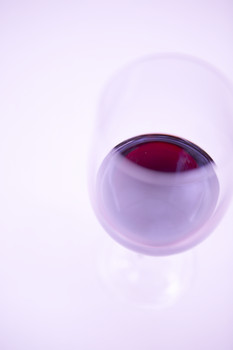Dec 2 2006
 According to British scientists when it comes to the health benefits of red wine, the good old French or Italian reds are by far the best option.
According to British scientists when it comes to the health benefits of red wine, the good old French or Italian reds are by far the best option.
The researchers say the traditional red wines from the vineyards of France and Italy are the best at protecting the heart, because reds from these two particular regions contain the highest concentrations of 'oligomeric procyanidins', the antioxidants which contribute to cardiovascular health.
It seems the wines from the Nuoro province in Sardinia, and the Gers area in the foothills of the Pyrenees, are particularly rich in chemicals called polyphenols and contain as much as 10 times more of the beneficial compounds than alternatives from Australia, South Africa and the United States.
Numerous studies over recent years have firmly established that a glass or two of red wine a day is good for the heart, and moderate drinkers are thought to be less likely to suffer from heart disease than those who abstain.
Also the regular consumption of red wine is regarded as an important element in the "Mediterranean diet", which is thought to explain the greater longevity of people living in southern Europe.
The benefits of diets such as the Mediterranean one are derived to some extent from a group of antioxidant chemicals called polyphenols, which protect the condition of the blood vessels.
Polyphenols are found in dark chocolate, apples and cranberries, and tea and coffee.
The researchers have identified a particular group of polyphenols, known as oligomeric procyanidins, which they believe offer the greatest degree of protection to human blood-vessel cells.
Procyanadins suppress production of endothelin-1, a protein that constricts blood vessels, and armed with this knowledge, the researchers set out to establish whether wines from any particular regions were especially rich in procyanidins.
They exposed cultured human blood vessel cells to 165 different wines to identify the polyphenols with most potent effects on blood vessels.
The team, led by Professor Roger Corder of Queen Mary, University of London and Professor Alan Crozier of the University of Glasgow, discovered that reds from Nuoro, such as Cannonau, and from Gers, such as Madiran, were found to have between two and four times more procyanidins than other red wines.
They also had the greatest effect on endothelin-1 production in the laboratory.
This has possibly had an effect on the wider health of the local populations as both regions were selected for testing because of census data showing that they have above-average longevity, particularly for men.
The researchers say that two small 125 millilitre glasses of Madiran wine a day would provide between 200 and 300 milligrams of procyanidins, which research suggests is enough to lower blood pressure.
The team suspect that the traditional wine-making techniques used in these two regions probably explain much of their higher procyanidin content.
The procyanidin compound comes mainly from grape seeds which are best extracted in a long fermentation process where both the seeds and the skins of grapes ferment over a three to four week period.
The modern techniques used in creating 'New World' wines often only ferment the seeds and skins for no more than a week, leaving fewer procyanidins in the finished wine.
Grape variety is also important as some grapes such as those used in the south west of France are particularly rich in procyanidins but the fermentation process is still thought to be a factor in how high procyanidin content will be.
Professor Corder says healthy wine is a difficult concept as too many people over-indulge and smooth, sweet, very alcoholic wines tend to dominate the market, which are not as a rule high in procyanidins.
It seems wines which are rich in procyanidin are more difficult to make to high standards, have a tannin taste, and are expensive.
Professor Corder says more research is needed to determine how procyanidins in wine affect human health and drinking smaller quantities with meals is the only pattern of wine-drinking that is associated with health benefits.
The study is published in the journal Nature.